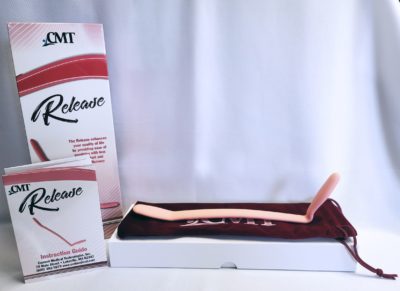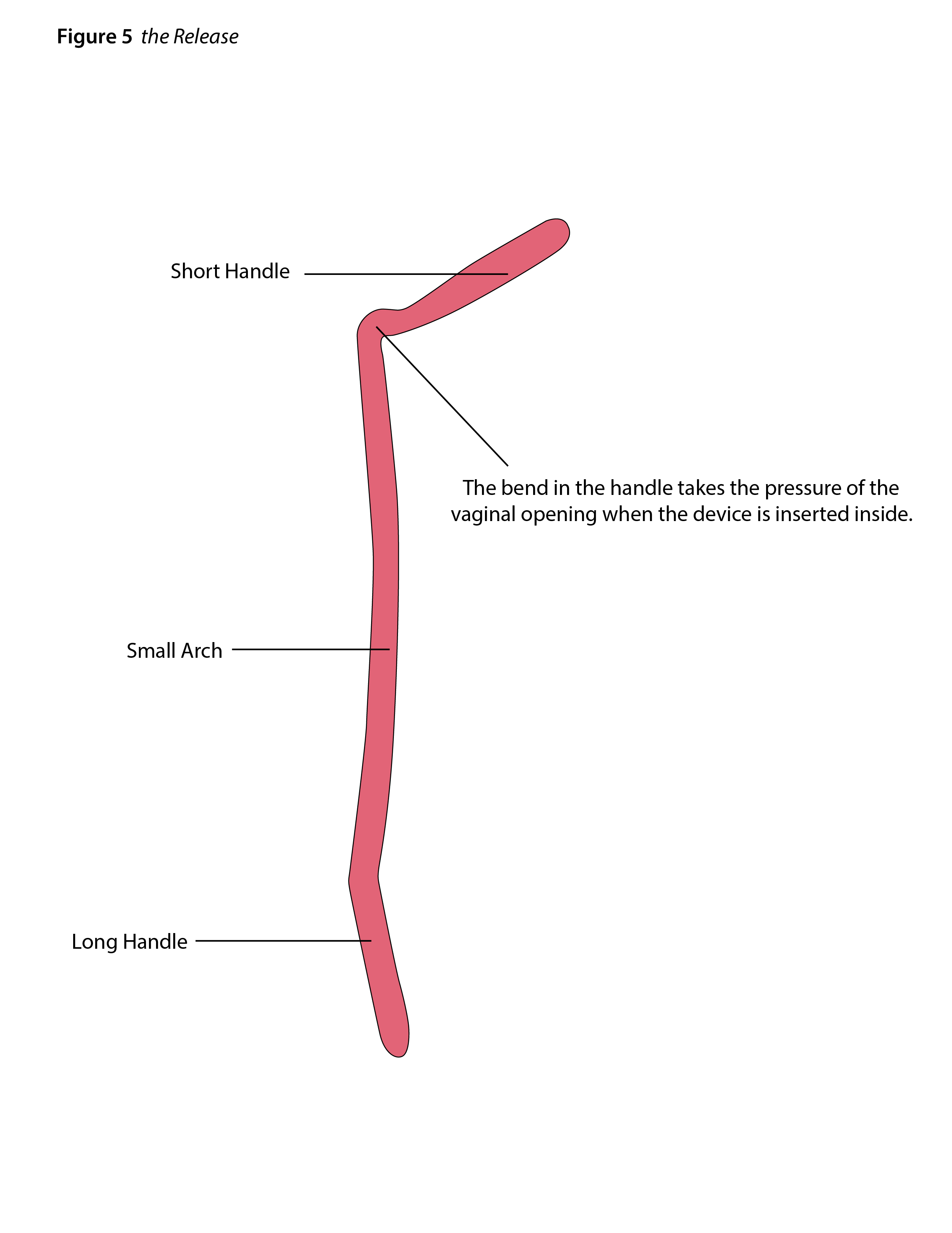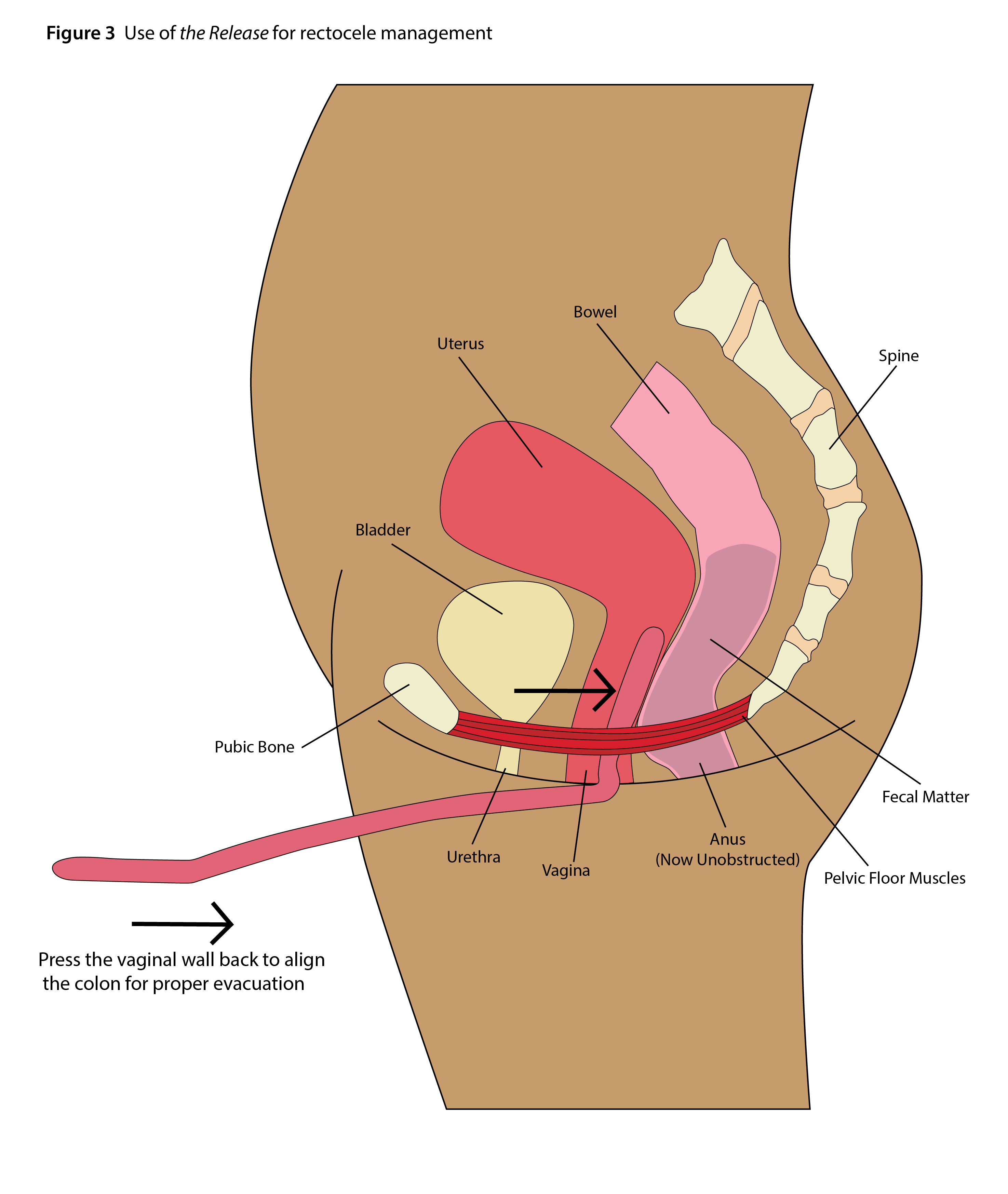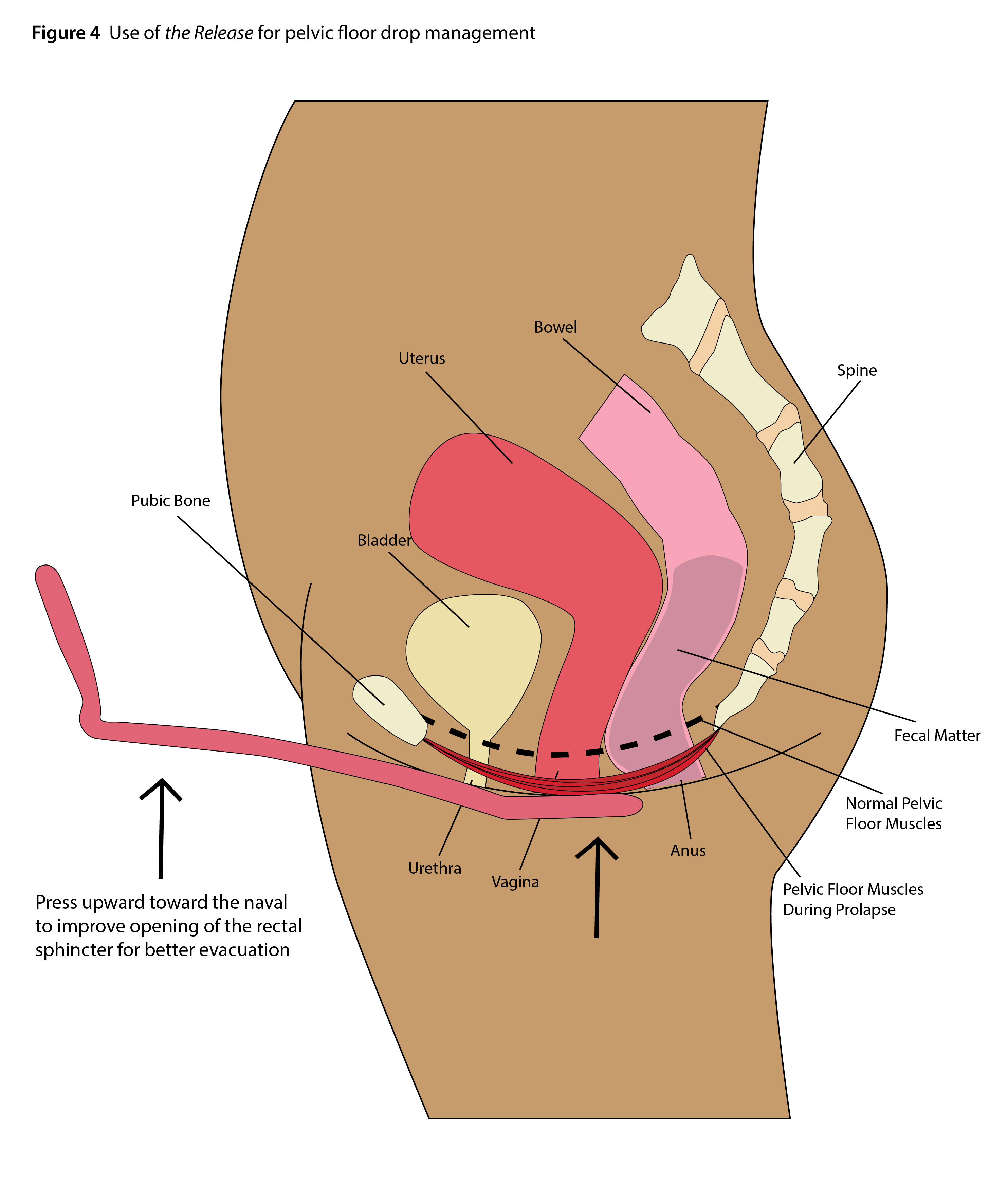The Release Device for Women: Relieves Discomfort of Bowel Issues
The Release Device for Women: Relieves Discomfort of Bowel Issues
SKU: CMT-R01The Release is a gentle vaginal device designed to relieve bowel issues associated with Pelvic Organ Prolapse (POP). Clinicians recommend the Release because it provides:
- a safe, hygienic option for women of all ages
- relief from complications of POP, such as difficulty with bowel movements due to a rectocele (a weakened or herniated vaginal wall)
- a non-invasive way to ease the pain and discomfort of constipation and other bowel issues.
For Clinicians referring patients to this product, please use our Rx Pad which can be found by clicking here.
“You have created a wonderful product that has given me a piece of my life back. The Release is easy to use, comfortable, and does exactly what it needs to do! As embarrassing as it is to send this email, I had to say, THANK YOU!!” Ms. M.
What are customers saying about Release?
Review left by Elizabeth M.
5 Star Review
I only recently learned of my issue and need for “The Release” took a month or so ago. I told my mom about it bc she suffers from the same issue. She ordered it immediately and loved it! She called and told me I *had* to buy it! I’m in WA and she’s in TX. The cheapest shipping option got it to us both in just 3 days! We were both expecting a week! This tool makes the process of going to the bathroom, when you have a rectocele, SO much easier! No more awkward twisting or making your hand cramp! Thank you so much for coming up w this device and for taking FSA/HSA payments!
What is the Release?
Release is a new vaginal splinting tool designed to help people with bowel issues associated with Pelvic Organ Prolapse (POP). Many people with a POP experience issues evacuating due to a Rectocele. Release is designed to help the user externally by pushing up against the perineum and internally, through the vaginal canal, to move waste back into the appropriate position for normal evacuation.
What is Pelvic Organ Prolapse?
As many as 5.3 million women in the United States have some form of Pelvic Organ Prolapse. POP is cause by a weakening of pelvic floor muscles and connective tissue which can be a result of age and/or childbirth. There are several types of POP’s and they are as follows:
- Cystocele – When the bladders descends into the vagina. This type of POP is prevalent in females who have had a hysterectomy. The removal of the uterus allows the bladder to descend more easily into the vaginal space. If the cystocele is severe enough, the bladder may protrude or bulge out of the vagina. Another common diagnosis caused by bladder descension is Urethrocele which can cause vaginal irritation, pressure, frequent urination, stress incontinence and painful sex.
- Uterine Prolapse- As described by the name, is when the uterus descends into the vaginal space. If you have this types of prolapse, you might feel pressure around your pelvis and you may also see a protrusion of your cervix outside of your vagina.
- Enterocele & Rectocele – Enterocele is when your intestines slide into the vaginal space and a Rectocele is when your rectum slides into your vaginal space. With either of these diagnosis, it may be hard to make a poop. Often patients with these conditions feel constipated or bloated.
How do people poop normally with a Rectocele?
Rectocele is the weakening of the posterior vaginal canal which enables the rectum to move into the vaginal canal space. This can cause a vaginal bulge downward toward the Perineum. Most people with a rectocele commonly complain of pressure both in the perineum and vagina and issues such as obstructive defecation and constipation. A common technique used and taught by Pelvic Floor Therapists is “vaginal splinting”.
Genetics, pregnancy, delivery, heavy lifting, poor breathing and or chronic straining can lead to structural and anatomical changes in a woman’s pelvic structures. These changes can lead to weakened and compromised support for the pelvic organs (vagina, uterus, rectum and/or bladder). These conditions are often referred to as pelvic organ prolapse.
Difficulty emptying the bowels without constipation is usually due to these anatomical or mechanical changes. Women with these problems experience prolonged and/or ineffective pushing, and often have to manually support the perineum (tissue between vagina and anus) and/or back wall of the vagina to have a bowel movement.
Features and Benefits of Release:
The benefits of using the Release is to support the pelvic tissues so that the bowels can fully evacuate without straining and to protect vulnerable tissues from further stress.
-
- During pregnancy – constipation and straining during pregnancy can potentially create a rectocele or weaken the pelvic floor muscles. Using the Release could reduce the risk of these conditions developing or progressing. The long handle of the Release is designed to accommodate reaching the pelvic area during pregnancy (and with increased abdominal girth).
- Constipation or history of constipation – any type of straining and/or ineffective emptying of the bowels tends to contribute to stress and strain on structures that support the pelvic organs. Using the Release could protect against damage to these
- Difficulty initiating bowel movement – increased descent of the perineum can make pushing for a bowel movement ineffective. Bulging of the rectal wall into the vaginal canal (rectocele) creates a pocket where stool can get stuck. The Release helps to create a more normal anatomical position of the surrounding tissue so the bowels can be emptied with ease.
What is Vaginal Splinting?
Vaginal Splinting is the technique of using one’s fingers against the perineum to push the bulge of a rectocele back up into place. The procedure also involves inserting your fingers inside the vaginal canal to push the rectum back into the appropriate position to properly eliminate waste.
Are there any drawbacks to Vaginal Splinting?
There are at least three drawbacks as expressed by patients when vaginal splinting at home:
- “It’s Gross”- Many patients have expressed some form of anxiety over having to insert their fingers into their vagina and feel themselves move their stool back into place.
- “Difficult to Maneuver”- Some people lack the dexterity to get their fingers into the right place to perform the technique.
- “Can’t Reach”- Larger or Pregnant People cannot reach the perineum or vaginal cavity.
How Does the Release Help with Rectocele?
The Release tool helps the user by eliminating all of the drawbacks associated with vaginal splinting plus some added comfort measures as well. First off, the product itself consists of three parts, each part required detailed thought in order to make sure the device was easy for anyone to use, comfortable and works!
Genetics, pregnancy, delivery, heavy lifting, poor breathing and or chronic straining can lead to structural and anatomical changes in a woman’s pelvic struc- tures. These changes can lead to weakened and compromised support for the pelvic organs (vagina, uterus, rectum and/or bladder). These conditions are often referred to as pelvic organ prolapse.
Difficulty emptying the bowels without constipation is usually due to these anatomical or mechanical changes. Women with these problems experience prolonged and/or ineffective pushing, and often have to manually support the perineum (tissue between vagina and anus) and/or back wall of the vagina to have a bowel movement.
Features and Benefits of Release:
The tool itself is about 10.5 inches long and looks kind of like a small funny looking hockey stick. Each aspect of this funny looking hockey stick is there for a reason as you will read below. As you remove Release from the box and take it into your hand you will notice that it is sturdy yet flexible and soft. We have designed this tool to be sturdy enough to get the job done but with some give to make sure that no harm can be done to the delicate tissue. We have also wrapped the entire tool in silicone so the entire feel of the device is soft and silky smooth. Below are further characteristics of the tool parts
Top Handle- The top handle is designed to be at a slight angle in order for the tool to be aligned more easily for using the bottom tool inside the vaginal cavity. Although it is the top handle, it is also the tool that is used externally to press up against the perineum thereby effectively eliminating the bulge.
Middle part of the tool (Shaft)- The shaft is 6.75 inches long which provides ample length to properly reach the perineum and vaginal cavity.
Bottom of tool (Blade)- Just under 3 inches in length and .75 inches in width the blade is perfectly proportioned for working within the vaginal canal. The blade also has a slight bump out which was developed to ease pressure on the skin at the bottom of the vagina (Fourchette).
When Not to Use:
- Active infection in the vagina or the vulva
- Burning, tearing or irritation and/or bleeding at the vagina, vulva or anus
Cleaning and Storage:
- The Release is made of non-porous silicone and is non-penetrable for
- After each use wash your Release with any type of anti-bacterial soap and warm water. Be sure to lather the soap generously all over the device with clean hands for at least 20 seconds. Rinse with warm water and dry thoroughly.
- Once completely dried, your Release can be stored in its protective pouch.
Warranty / Return Policy
- The Release has a 30-day money back policy provided that the device has not been used and is still in its sealed package. Shipping charges are not refundable. Your refund will be based on how it was originally purchased. After 30 days, you will be given a CMT store credit only. After 45 days, the product will be un-returnable.
- If the sealed package is broken, ripped or damaged in any way it can no longer be returned.
| Weight | .56 lbs |
|---|---|
| Dimensions | 11.5 × 4 × 1.44 in |








